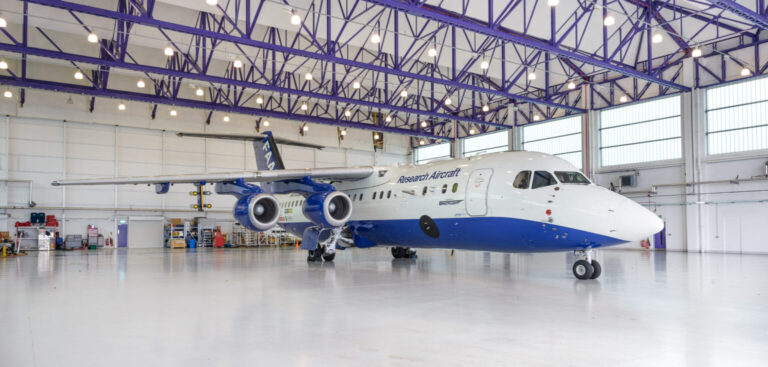The FAAM Airborne Laboratory is now able to share live weather data from the air direct to the UK Met Office.
The research aircraft collects an abundance of environmental data and carries enough instrumentation to measure 150 parameters during a flight. All this data goes into the Centre for Environmental Data Analysis (CEDA) archive to be used by environmental scientists. Analyzing this data can take many months, so it may be a while before findings are shared. But a recent addition to the research aircraft’s in-flight data sharing capabilities means the Airborne Laboratory can now provide live data for use in large-scale weather and climate modeling to directly help develop weather forecasts.
“The data on our aircraft is information about the conditions we fly through and gets packaged up in a form that is able to be read by systems in the Met Office,” explained Jack Farr, scientific measurement support at the FAAM Airborne Laboratory.
“This information is then passed along to the WMO to be used by computer models and human forecasters anywhere on Earth.”
The FAAM Airborne Laboratory takes measurements at one-minute intervals, giving a detailed picture of the weather conditions during a flight. The data collected includes:
- Global position (latitude and longitude)
- Altitude
- Air temperature
- Relative humidity
- Wind speed
- Wind direction
Live data transmission is something that commercial aircraft have been doing for several years, through projects such as AMDAR, TAMDAR and IAGOS. The FAAM Airborne Laboratory is not sending data through any of these programs but is still providing the information to the Met Office.
What makes this data special is that it is collected primarily from the lower troposphere, so it’s likely to be highly relevant to building accurate forecasts. The FAAM Airborne Laboratory also flies non-standard flight paths and often measures in regions experiencing particular weather conditions. It can therefore provide data for places that otherwise wouldn’t be measured.
Commercial aircraft fly at much higher altitudes for efficiency, so much of their data from the lower troposphere comes during the ascent and descent portion of flights, generally close to airports. Regions of the lower troposphere away from these airports are less likely to be measured, which is where data from the FAAM Airborne Laboratory comes in useful.



